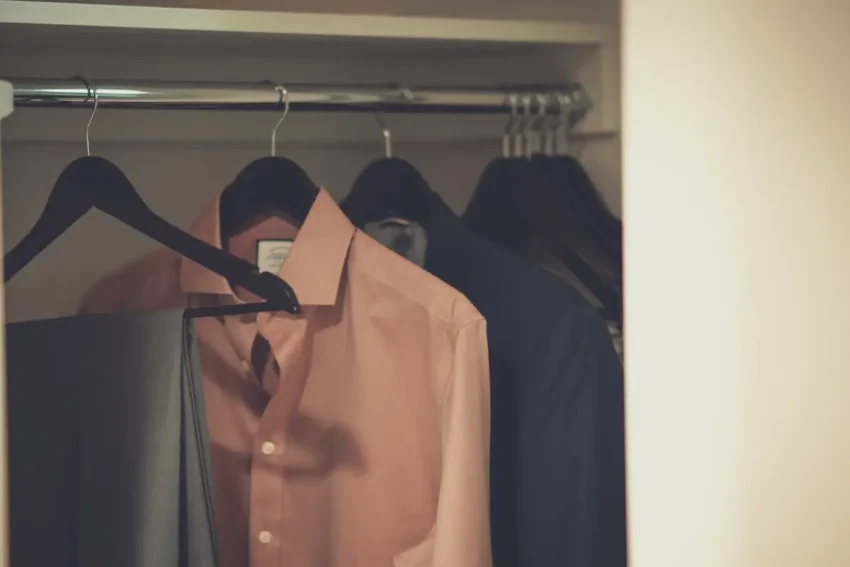What Makes a Closet Layout Efficient and Perfect for Daily Use

Closets are functional areas that can make or break the efficiency of your daily routine. A well-designed closet layout organizes your belongings and saves time, reduces stress, and keeps your wardrobe in pristine condition.
While a cluttered and poorly arranged closet can leave you frustrated, an efficient one feels intuitive, offering everything you need within reach. But what exactly makes a closet layout efficient and perfect for daily use? From maximizing space to incorporating smart storage solutions, an effective closet design considers practicality and lifestyle needs.
Contents
- 1 Balancing Aesthetics with Practicality
- 2 Maximizing Vertical and Horizontal Space
- 3 Prioritizing Accessibility for Daily Items
- 4 Creating Dedicated Zones for Different Categories
- 5 Incorporating Smart Storage Solutions
- 6 Lighting and Visibility in Closet Design
- 7 Designing for Flexibility and Change
- 8 Streamlining the Daily Dressing Routine
Balancing Aesthetics with Practicality
An efficient closet should function well and look appealing, creating a space that feels organized and inviting. A clean, cohesive design encourages you to keep it tidy while making your daily routine more enjoyable. Using neutral tones, matching hangers, and stylish storage boxes adds visual harmony without sacrificing function.
Personal touches like a mirror, a small rug, or artwork can elevate the space further. For many homeowners, the choice between walk-in vs. reach-in closets highlights the need to balance beauty with usability, since each style offers unique advantages. When aesthetics and practicality work together, your closet becomes efficient and pleasant.
Maximizing Vertical and Horizontal Space
An efficient closet layout begins with the ability to use every inch of available space. Far too often, the areas above and below the main hanging rod remain empty or underutilized, leading to wasted potential. Installing double hanging rods can instantly double the capacity for shirts, blouses, or pants, while tall storage units ensure that vertical areas are fully engaged.
High shelves are perfect for items like hats, luggage, or bins filled with off-season clothing. On the horizontal plane, adjustable shelves and drawers help store bulkier items such as sweaters or handbags in a neat, organized way. When your closet embraces vertical and horizontal dimensions, it allows for a logical arrangement where each item has a clear home, reducing clutter and increasing efficiency.
Prioritizing Accessibility for Daily Items
Closet layouts that truly enhance daily use prioritize accessibility. Think about the clothes and accessories you reach for most. Those should always be within arm’s reach at eye or waist level. Placing everyday essentials, such as work attire, gym outfits, or favorite shoes, in prime locations eliminates wasted time digging or stretching for them.
Less frequently used pieces, like formalwear or seasonal coats, can be placed higher up, in drawers, or toward the back. Pull-out racks, open shelving, and sliding drawers take accessibility even further, allowing you to grab what you need with minimal effort.
Creating Dedicated Zones for Different Categories
A hallmark of an efficient closet layout is the creation of clearly defined zones. Rather than having pants, shirts, and shoes tangled together, each category should be given its own section. Long-hanging areas can be reserved for dresses and coats, while short-hanging rods can neatly accommodate shirts and trousers.
Folded sweaters may sit on designated shelves, while shoes line up on racks or cubbies. Accessories deserve thoughtful placement. Belts, ties, scarves, and jewelry can be stored in dedicated drawers, trays, or hooks to avoid tangling and loss. This zoning system eliminates the chaos of searching for items and provides a predictable structure.
Incorporating Smart Storage Solutions
The right storage solutions can transform a closet from functional to exceptional. Efficiency often comes down to using clever systems that match your personal needs. Pull-out trays for shoes keep pairs visible and dust-free, while velvet-lined drawers protect jewelry and prevent tangling.
Adjustable shelving allows you to customize space depending on your wardrobe, and slimline hangers create uniformity while maximizing hanging capacity. In smaller closets, over-the-door organizers and under-shelf baskets provide extra storage without overcrowding. Walk-in closets may benefit from built-in cabinetry with hidden compartments that combine elegance with utility. The key is tailoring these tools to your lifestyle.
Lighting and Visibility in Closet Design
Lighting is often an overlooked factor, but it is crucial for closet efficiency. A poorly lit space makes it difficult to distinguish colors, locate accessories, or even notice items tucked away. Incorporating LED strip lights along shelves or recessed fixtures in the ceiling ensures every corner is illuminated. Motion-sensor lighting adds convenience, automatically turning on as you enter.
Mirrors, too, enhance visibility by reflecting light and providing a functional dressing aid. For additional clarity, glass-front drawers or open shelving let you see what you own without rummaging. Good lighting transforms your closet from a dim, cluttered nook into a bright, inviting space where choosing outfits feels effortless.
Designing for Flexibility and Change
Closet needs are not static, which makes flexibility a cornerstone of efficient design. Wardrobes expand, personal styles shift, and lifestyles evolve. Your closet should adapt accordingly. Adjustable shelves and modular organizers allow for rearrangement as storage demands change. For example, as your shoe collection grows, you may repurpose shelving once used for folded clothes.
Hanging rods that can be repositioned provide space for long winter coats in one season and shorter summer attire in another. Even bins and baskets can be rotated for seasonal accessories, from scarves and gloves to swimsuits and hats. Designing with flexibility in mind ensures your closet never feels cramped or outdated.
Streamlining the Daily Dressing Routine
At its core, the purpose of an efficient closet is to streamline your daily routine. The best layouts minimize decision fatigue by making everything visible and logically arranged. Outfits can be grouped by occasion, color, or season, helping you choose quickly without frustration.
A dedicated area for accessories ensures you can easily complete your look without searching drawers or counters. Including a small bench or dressing space within or near the closet adds convenience for trying on shoes or laying out outfits in advance. When your closet supports your lifestyle, getting dressed becomes less of a task and more of an enjoyable ritual.
A closet that is efficient and perfect for daily use is the result of thoughtful design, where every element serves a purpose. By maximizing space, prioritizing accessibility, creating zones, and incorporating smart storage, you build a system that simplifies life. Adding good lighting, flexible layouts, and aesthetic touches only enhances the experience.
More than a storage area, an efficient closet becomes a functional, stylish, and stress-free environment that helps you start and end each day with ease. With the right layout, your closet can truly become one of the most useful and enjoyable spaces in your home.



